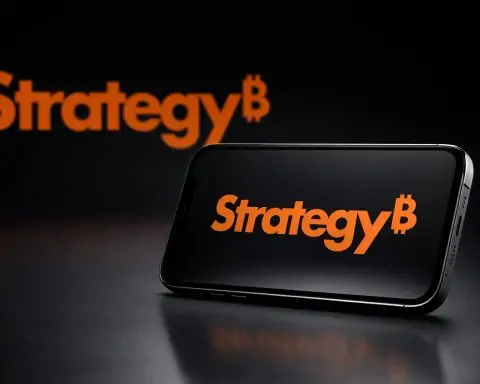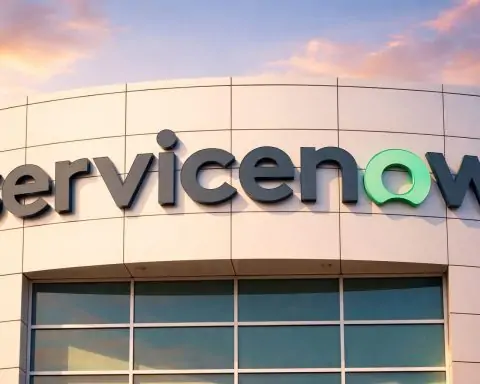- Speculative Price Spikes: Tiny biotech Adaptimmune Therapeutics (NASDAQ: ADAP) has experienced explosive volatility. The stock jumped ~42% on October 8, 2025 alone and nearly doubled ( +98% intraday) on Sept. 19 (from $0.08 to $0.16), even climbing to ~$0.2020 after-hours that day [1]. These swings came on no major news and were fueled by frenzied trading (over 705 million shares traded vs ~60M average) [2], underscoring extreme speculation.
- Penny-Stock Terrain: Even after rebounding to around $0.18–$0.20 per share, ADAP remains a penny stock with a market cap near $50 million [3]. Shares are down ~75–80% over the past year [4] [5] and sit far below the 52-week high of $0.91, though well off the record low of ~$0.04 hit during the summer rout [6]. Many long-term holders remain deep underwater despite the recent spike [7].
- Asset Fire-Sale to Raise Cash: Facing a severe cash crunch, Adaptimmune sold its four leading T-cell therapy programs – including newly approved cancer therapy Tecelra – to US WorldMeds in mid-2025 for $55 million upfront plus up to $30 million in milestones [8] [9]. This drastic pivot allowed Adaptimmune to pay off all debt (about $40M owed to Hercules Capital) [10] [11] and slim down to a minimal pipeline focused only on early-stage assets (preclinical PRAME and CD70 T-cell therapies) [12]. The CEO called the deal “critical…to ensure our patients continue to receive Tecelra” given the company’s financial situation [13].
- Financial Strain:Q2 2025 revenues came in at $13.7 million (boosted by ~$11.1M in Tecelra sales from 16 patients) [14], but the quarter still saw a net loss of ~$30.3 million [15]. By mid-2025, cash reserves fell to ~$26 million, prompting a warning of “substantial doubt” about Adaptimmune’s ability to continue as a going concern [16]. The asset sale in August provided a lifeline – management now expects the remaining cash to fund operations into mid-2026 [17] – but future revenues depend entirely on milestone payments or new partnerships with no marketed products left [18].
- Analysts and Investors Wary: Wall Street sentiment on ADAP is largely bearish or cautious. In October, independent Weiss Ratings slapped Adaptimmune with an extremely low “Sell (E+)” grade – essentially a deep junk rating signaling very high risk [19]. Major banks downgraded the stock over the summer: for example, Mizuho cut ADAP from “Outperform” to “Neutral” in June and slashed its price target from $1.50 to $0.50 [20]. As of this month, no major analyst recommends buying – the consensus stands at Hold/Reduce, with even optimistic targets only in the $0.25–$0.50 range [21] [22].
- Outlook – Peril and Potential: The next potential catalyst is Adaptimmune’s Q3 2025 earnings report (due ~November 12, 2025 [23]), which will likely show minimal revenue post-asset-sale. The company also faces a Nasdaq compliance deadline: it must lift its share price above $1 for 10 days by Oct. 27, 2025 or risk delisting from the exchange [24]. Looking ahead, Adaptimmune’s fate hinges on securing new partnerships or funding. Bulls note its ~$50M market cap is roughly covered by cash, giving any pipeline progress “for free” [25] – meaning a successful partnership or acquisition of its TCR technology could spark a major rebound. However, bears warn that without fresh deals or financing, the clock runs out by 2026, raising the specter of dilution or even insolvency [26]. In the broader cell therapy arena, competition is fierce – rival biotechs like Iovance and Immatics continue advancing late-stage solid tumor trials [27] – and Adaptimmune, having sold its lead products, will need to “adapt” quickly to avoid being left behind.
Stock Price Rollercoaster in 2025
Adaptimmune’s stock has been on a wild ride this year, with extreme price swings in recent weeks grabbing headlines. After languishing in penny-stock territory for months, ADAP suddenly caught fire in late September 2025. On September 19, shares opened at a mere $0.08 but skyrocketed 98% by day’s end to $0.16, then jumped another 30% after-hours to ~$0.20 [28]. This stunning one-day move – without any company-specific catalyst – was accompanied by an enormous volume of 705+ million shares traded (versus ~60 million on an average day) [29]. Market observers noted Adaptimmune as one of the top gainers that session despite the lack of fundamental news [30] [31]. The rally appeared driven by renewed investor interest and speculation, not new data – a Nasdaq report bluntly stated “no company-specific news was released on September 19” to explain the surge [32]. Instead, retail traders and momentum algorithms seemed to pile in, possibly in a short-squeeze frenzy or simple fear of missing out.
Just a few weeks later, another explosive spike confirmed ADAP’s rollercoaster status. On October 8, 2025, the stock leapt ~42% in a single day, hitting intraday highs around $0.24. Once again, volume was extraordinarily high (over 400 million shares by mid-day) and ADAP became one of Nasdaq’s top percentage gainers that day. By the next morning (Oct. 9), the rally even extended pre-market with another ~11% jump. Importantly, nothing material had changed with the company – no new trial results, product approvals, or major announcements came out to justify the sudden optimism. As one analysis noted, the spikes were propelled by “technical trading, short covering, or investor speculation rather than fundamentals”. In other words, Adaptimmune’s stock was moving on hype and hope, not on any fresh breakthrough from the business itself.
After these spikes, ADAP has settled back somewhat but continues to trade in the high-teens cents. As of mid-October 2025, the stock hovers around $0.18 per share [33]. That’s well above its panic lows (it briefly traded at just 4 cents over the summer) but still deep in penny-stock territory, reflecting how far the company’s fortunes have fallen. Even after quadrupling off its bottom, ADAP remains down roughly 75–80% from a year ago [34] [35]. Its current market capitalization is only about $40–50 million at this price level [36] – extraordinarily low for a biotech that, until recently, had an FDA-approved therapy on the market. For context, the stock’s 52-week high was $0.91 (reached in late 2024), and it would need to surge roughly 5× from here just to regain that level [37]. In short, the recent rallies, while dramatic in percentage terms, have only lifted ADAP off the floor. The stock is still a shadow of its former self, and many long-time investors who bought at higher levels remain deeply in the red [38].
Cash Crunch Drives Strategic U-Turn
The wild stock swings come against a backdrop of significant financial stress at Adaptimmune. Despite pioneering a novel T-cell therapy and even achieving its first product approval, the company’s financial position deteriorated rapidly through 2024–2025. The root of the problem is classic for clinical-stage biotechs: high cash burn, heavy R&D costs, and limited revenue. Adaptimmune did launch its first product, Tecelra (afamitresgene autoleucel), in late 2024 for a rare cancer (synovial sarcoma). However, the initial sales – while promising – were not nearly enough to sustain the company’s operations on their own [39].
In Q2 2025, Adaptimmune actually delivered better-than-expected revenue of $13.7 million, thanks mostly to Tecelra’s early rollout [40]. The new therapy contributed about $11.1 million in sales that quarter from treating 16 patients, representing >150% growth in patient volume over Q1 [41]. This showed strong demand in its small niche and validated the technology’s commercial potential. But the cost side was far bleaker. Even with Tecelra’s boost, Adaptimmune posted a net loss of $30.3 million for Q2 [42] and acknowledged that its cash reserves were dwindling fast. By June 30, 2025, the company held only ~$26 million in cash on hand [43] – not enough to fund another year of operations at the current burn rate. Management openly warned of “substantial doubt” about the company’s ability to continue as a going concern absent drastic action [44]. In other words, Adaptimmune was on track to run out of money within 12 months, a dire scenario that could lead to bankruptcy or highly dilutive fundraises if not addressed [45].
Facing this financial cliff, Adaptimmune’s leadership launched a review of “strategic alternatives” in mid-2025. The outcome was a dramatic plan to raise cash by offloading the crown jewels of its pipeline. On July 28, 2025, Adaptimmune announced a surprise deal to sell essentially all its late-stage and commercial assets to US WorldMeds, a private pharma company [46] [47]. This fire-sale included Tecelra (the only marketed product) and three advanced pipeline candidates – lete-cel, afami-cel, and uza-cel – which together represented Adaptimmune’s years of T-cell therapy research. In return, Adaptimmune would receive $55 million in cash upfront plus up to $30 million in future milestone payments tied to those programs’ success [48] [49]. To put that in perspective, the $55M upfront was about equal to Adaptimmune’s entire market cap at the time – underscoring how far the stock had fallen, since these assets were once valued in the hundreds of millions.
Management framed the deal as difficult but necessary. CEO Adrian Rawcliffe stated that “given the financial situation of the company, it was critical to secure the right strategic option…to ensure our patients continue to receive Tecelra.” [50] In other words, Adaptimmune could no longer afford to commercialize Tecelra or advance these therapies alone without risking running out of cash. By handing them off to US WorldMeds (which has more resources), the treatments could continue reaching patients and progressing in development, while Adaptimmune gets a much-needed cash infusion to stay afloat.
The transaction closed swiftly in August 2025, and Adaptimmune immediately used a chunk of the $55M to fully repay its outstanding debt (approximately $40M owed to Hercules Capital) [51]. This eliminated the interest burden and any near-term default risk. The company then undertook a massive restructuring. US WorldMeds agreed to hire roughly half of Adaptimmune’s staff (mostly those working on the transferred programs) [52], while Adaptimmune laid off about 62% of its remaining workforce [53] [54]. Essentially, Adaptimmune shrank down to a skeleton crew of just essential personnel to work on what little pipeline remains. Several top executives departed as well – by the end of Q3 2025, the company’s Chief Medical Officer, Chief Scientific Officer, Chief Commercial Officer, and CFO had all exited [55]. The organization that once aspired to be a “preeminent cell therapy company” was effectively gutted and rebooted as a much smaller entity.
After the dust settled, Adaptimmune’s business is now focused on just a few early-stage programs. It retained rights to two preclinical TCR T-cell therapies targeting PRAME and CD70 antigens (for certain cancers), as well as an allogeneic T-cell platform in research [56] [57]. Notably, even those remaining projects were placed on hold earlier in 2025 to conserve cash [58]. With no products on the market and these R&D programs in very preliminary stages, Adaptimmune’s future is highly uncertain. The recent speculative stock pop has given the company a window of opportunity – its cash runway now extends into mid-2026 after the deal [59] – but to survive longer-term, Adaptimmune will need to either advance a new therapy or, more likely, find partners/investors to fund its next chapter.
Analysts Sound the Alarm
Wall Street analysts and industry experts have reacted with skepticism about Adaptimmune’s prospects, even as the stock gyrates wildly. The consensus view: Adaptimmune is now a high-risk bet, and only a significant turnaround or deal will justify optimism. In early October, Weiss Ratings, an independent research firm, gave ADAP an exceptionally low grade of “Sell (E+)” [60]. Weiss uses a letter-grade scale, and an E+ is effectively one of the worst ratings on the spectrum – a clear warning sign about the company’s financial stability and investment risk. This mirrors what many on Wall Street have been saying for months.
Over the summer, multiple banks downgraded Adaptimmune’s stock amid the company’s strategic turmoil. For instance, Mizuho Securities cut its rating from “Outperform” (buy) to “Neutral” in June and slashed its 12-month price target from $1.50 down to $0.50 [61], citing the uncertain outlook after the asset sale. Around the same time, Guggenheim Securities reportedly moved ADAP from a Buy to a Hold, and Barclays reiterated an Underweight (sell) stance [62]. By October, no major brokerage had a Buy rating on ADAP – a striking turnaround from a couple years ago when the stock was a hot immunotherapy play. According to data from MarketBeat, the analyst coverage boils down to 1 Buy, 5 Hold, and 2 Sell ratings [63] (effectively a “reduce exposure” consensus). Price forecasts have also collapsed alongside the stock. While one outlier price target from earlier in the year sat around $1+, most analysts have been cutting their targets into the pennies. Even the more optimistic views only see upside to maybe the $0.25–$0.30 range, which is barely above the current price [64]. In short, the “smart money” is extremely cautious here.
This overt bearishness from Wall Street has arguably helped fuel the divide in market sentiment. Some contrarian retail traders appear to be doubling down on ADAP precisely because the experts are negative, betting on a surprise rebound or short-term squeeze. Online forums in recent weeks have featured debates on whether Adaptimmune is a bargain punt – pointing out that its market cap is now roughly equal to the cash it received from the asset sale, implying the remaining pipeline is being valued at close to zero. It’s a classic high-risk, high-reward scenario, and opinions are split. But most professional analysts emphasize the very real risks: Adaptimmune’s fundamentals have eroded, its business model has essentially reset, and without a clear path to create shareholder value, the stock could just as easily grind back down once the speculative fervor fades [65].
One additional overhang is Nasdaq compliance. Adaptimmune’s stock has traded below $1 for over a year, putting it at risk of being delisted from the Nasdaq market. The company already received a 180-day extension in May 2025 by transferring to the Nasdaq Capital Market tier, giving it until October 27, 2025 to regain compliance with the $1 minimum bid price rule [66]. To avoid delisting, ADAP shares must trade above $1 for at least 10 consecutive business days by that deadline [67]. This is a tall order – the stock hasn’t seen $1 since early 2024, and is currently 80% below that threshold. Adaptimmune could pursue a reverse stock split to artificially boost the share price (a common tactic to meet listing requirements), but that wouldn’t fix the underlying issues and could further spook investors. Management has said they are monitoring the situation and will “assess potential actions” to regain compliance [68]. If the deadline passes without a solution, Nasdaq could initiate delisting proceedings, which would push ADAP onto the OTC market and likely thin out its investor base. This looming delisting risk adds another layer of urgency for the company to improve its stock performance or announce a salvage plan.
Forecast and Outlook
Looking ahead, Adaptimmune’s future remains highly uncertain – essentially a binary outcome that will depend on whether the company can pull off a comeback. In the near term, all eyes will be on the company’s Q3 2025 earnings report, expected around November 12, 2025 [69]. This will be the first quarterly update since the asset sale. Investors already anticipate that revenue will plummet (since Tecelra sales are no longer counted), and expenses should be sharply lower after the layoffs. The Q3 numbers will primarily reflect how aggressively Adaptimmune has cut costs and how much cash it has left. Any hints about extending the cash runway (through further belt-tightening or small partnerships) could be viewed as positive. Conversely, a reminder of the meager remaining business – likely just some collaboration or licensing revenue at best – could reinforce the fragility of the situation [70]. The earnings call will also be an opportunity for management to update shareholders on strategic plans now that the company is essentially starting over.
Beyond earnings, the big question is whether Adaptimmune can secure a new lifeline. The company is reportedly exploring partnership opportunities to advance its PRAME and CD70 TCR programs [71]. Any deal that brings in non-dilutive funding or external validation – for example, a larger biotech licensing one of these early-stage assets – would be a game-changer at this point. It could provide fresh cash and credibility, potentially justifying the recent speculative optimism [72]. Likewise, given Adaptimmune’s deep expertise in T-cell receptors, it’s conceivable that a pharma company interested in cell therapy tech could consider an outright acquisition. At today’s valuation (~$50M market cap), Adaptimmune could be a cheap pickup for a bigger player, especially one that might value the public listing or the remaining R&D team. Bulls argue that with the stock so beaten down, virtually any positive development – a partnership, a buyout rumor, a surprise clinical result – could spark outsized gains. Indeed, at this valuation, Adaptimmune’s cash on hand nearly equals its market value, [73] so investors are essentially getting the residual pipeline “for free.” This asymmetric setup is what draws speculators to hang on.
On the other hand, the bear case is straightforward: absent a deal or breakthrough, Adaptimmune will continue burning cash and likely run out of money by 2026 [74]. The company would then face either bankruptcy or another dilutive share issuance to raise funds – either outcome would severely hurt existing shareholders. With its lead products gone, Adaptimmune has little tangible progress to report in the coming months. New clinical trials would take years and significant capital to reach fruition. Meanwhile, competition in cancer cell therapy remains intense. Adaptimmune was once at the forefront – it made history with Tecelra in 2024 as the first FDA-approved TCR T-cell therapy for a solid tumor [75] – but larger competitors have since caught up or surpassed it. Iovance Biotherapeutics, for example, is pushing toward approval with its TIL (tumor-infiltrating lymphocyte) therapy for melanoma and cervical cancer. Immatics and others in the TCR space are advancing their own trials for solid tumors [76]. These peers continue to attract investor attention (and funding), whereas Adaptimmune’s story has turned into one of retrenchment. Furthermore, past partnerships that once buoyed Adaptimmune’s prospects (such as a $3B alliance with Genentech in 2019) have fallen apart – Genentech terminated that deal in 2024 amid shifting priorities [77], and other collaborators like GSK also pulled back. This highlights that even pharma giants struggled with the challenges of T-cell therapies for solid tumors, which are scientifically and commercially tough.
In summary, Adaptimmune Therapeutics now stands at a crossroads. Its stock’s recent surge has given it a burst of attention – and a bit more breathing room financially – but the company’s underlying condition remains fragile. The dramatic steps taken in 2025 (selling key assets, slashing staff) were essentially last-resort measures to buy time. That time must now be used wisely. For investors, ADAP is a high-stakes gamble: it could either stage a remarkable turnaround (if management secures a partnership or new investment to reboot growth) or drift toward obscurity if the cash runs out with no rescue in sight [78]. The coming months will be crucial. Positive surprises – like an announced collaboration or encouraging early data – would validate those betting on a biotech comeback. Absent that, reality will set in that Adaptimmune is a much-diminished player facing an uphill battle. The company’s very name highlights its challenge: it will need to “adapt” to survive in an evolving and unforgiving biotech landscape. Investors and analysts alike will be watching closely to see if this penny-stock can defy the odds or if its recent spike is indeed just a final speculative blip on the radar.
Sources: Adaptimmune SEC filings [79] [80]; TS2.Tech analysis [81] [82] [83] [84]; Nasdaq/RTTNews report [85] [86]; FierceBiotech [87] [88]; MarketBeat/StockTitan data [89] [90]; Company press releases and earnings calls.
References
1. ts2.tech, 2. ts2.tech, 3. ts2.tech, 4. ts2.tech, 5. ts2.tech, 6. ts2.tech, 7. ts2.tech, 8. www.fiercebiotech.com, 9. www.fiercebiotech.com, 10. www.fiercebiotech.com, 11. www.fiercebiotech.com, 12. ts2.tech, 13. www.fiercebiotech.com, 14. www.nasdaq.com, 15. www.nasdaq.com, 16. ts2.tech, 17. ts2.tech, 18. ts2.tech, 19. ts2.tech, 20. ts2.tech, 21. ts2.tech, 22. ts2.tech, 23. www.nasdaq.com, 24. www.adaptimmune.com, 25. ts2.tech, 26. ts2.tech, 27. ts2.tech, 28. ts2.tech, 29. ts2.tech, 30. www.nasdaq.com, 31. ts2.tech, 32. www.nasdaq.com, 33. ts2.tech, 34. ts2.tech, 35. ts2.tech, 36. ts2.tech, 37. ts2.tech, 38. ts2.tech, 39. www.nasdaq.com, 40. www.nasdaq.com, 41. www.nasdaq.com, 42. www.nasdaq.com, 43. ts2.tech, 44. ts2.tech, 45. ts2.tech, 46. www.fiercebiotech.com, 47. www.fiercebiotech.com, 48. www.fiercebiotech.com, 49. www.fiercebiotech.com, 50. www.fiercebiotech.com, 51. www.fiercebiotech.com, 52. www.fiercebiotech.com, 53. www.fiercebiotech.com, 54. www.fiercebiotech.com, 55. www.fiercebiotech.com, 56. ts2.tech, 57. ts2.tech, 58. ts2.tech, 59. ts2.tech, 60. ts2.tech, 61. ts2.tech, 62. ts2.tech, 63. ts2.tech, 64. ts2.tech, 65. ts2.tech, 66. www.adaptimmune.com, 67. www.adaptimmune.com, 68. www.adaptimmune.com, 69. www.nasdaq.com, 70. ts2.tech, 71. ts2.tech, 72. ts2.tech, 73. ts2.tech, 74. ts2.tech, 75. ts2.tech, 76. ts2.tech, 77. ts2.tech, 78. ts2.tech, 79. www.adaptimmune.com, 80. www.adaptimmune.com, 81. ts2.tech, 82. ts2.tech, 83. ts2.tech, 84. ts2.tech, 85. www.nasdaq.com, 86. www.nasdaq.com, 87. www.fiercebiotech.com, 88. www.fiercebiotech.com, 89. ts2.tech, 90. ts2.tech







